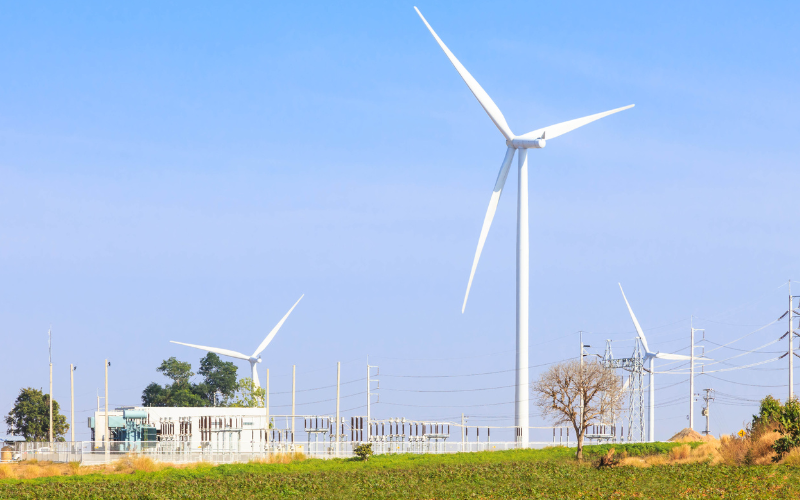
The vast and majestic wind farms that grace our landscapes are more than just symbols of sustainability; they are the culmination of cutting-edge technology and automation. Behind the scenes of these sprawling wind fields stands a silent guardian, Supervisory Control and Data Acquisition (SCADA) systems, orchestrating a harmonious dance between turbines and the ever-changing wind. In this blog, we’ll delve into the world of SCADA and discover how it empowers wind-field automation, making clean energy production more efficient and reliable than ever before.
1. Real-time Monitoring:
The cornerstone of wind-field automation is real-time monitoring. SCADA systems are the watchful eyes that continuously collect data from sensors scattered throughout the wind farm. Wind speed, turbine health, energy output, and more—this wealth of information is streamed in real-time to operators. This constant vigilance allows for swift response to anomalies, ensuring uninterrupted energy production.
2. Predictive Maintenance:
Imagine knowing when your car needs an oil change before the engine sputters to a halt. SCADA systems offer a similar feat for wind turbines through predictive maintenance. By analyzing data trends and performance metrics, these systems can foresee when a turbine might require attention. This means less downtime, longer turbine lifespans, and ultimately, more clean energy generated.
3. Turbine Control:
With SCADA at the helm, wind turbines can be controlled remotely. Operators can start, stop, or adjust individual turbines or entire clusters with precision. This dynamic control ensures that turbines operate optimally, adapting swiftly to changing wind conditions and energy demand.
4. Energy Optimization:
SCADA systems bring intelligence to energy production by optimizing the entire wind field. They can intelligently balance energy production across turbines to match demand, maximizing energy generation while minimizing waste.
5. Fault Detection and Response:
In the event of a turbine fault or malfunction, SCADA systems are the first responders. They detect issues in real-time and execute predefined responses, such as shutting down a turbine to prevent further damage. This not only protects equipment but also enhances safety for personnel working on-site.
6. Remote Accessibility:
One of SCADA’s superpowers is remote accessibility. Operators can monitor and control wind fields from virtually anywhere with an internet connection. This flexibility is a game-changer for responding to emergencies, conducting routine maintenance, and optimizing operations without the need for physical presence.
7. Data Analysis and Reporting:
SCADA systems are data powerhouses, collecting vast amounts of information. But the true magic lies in what they do with that data. They transform it into actionable insights through comprehensive reports and analysis. These insights guide decision-making, helping operators fine-tune wind-field operations for peak efficiency and maximum energy production.
Conclusion: A Breeze Towards Sustainable Energy
In the journey towards sustainable energy, SCADA systems are the unsung heroes of wind-field automation. They make it possible to harness the boundless power of the wind efficiently and responsibly. As we continue to embrace the wind as a clean energy source, SCADA systems will undoubtedly play an increasingly crucial role in ensuring that wind fields operate at their full potential, propelling us towards a greener and more sustainable future.
Category: Hydroelectric Energy
